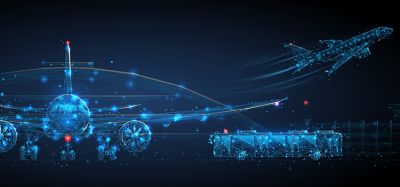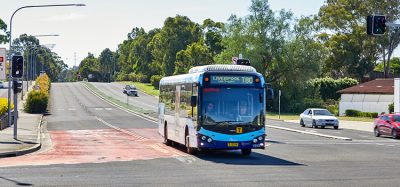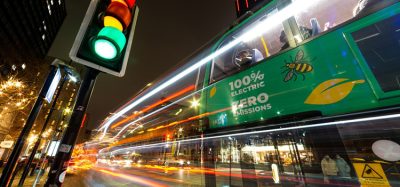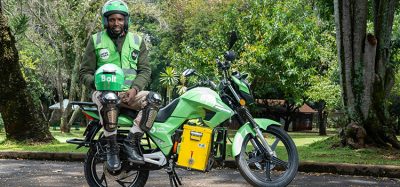Harnessing AI to effect a micro-mobility parking evolution in urban environments
- Like
- Digg
- Del
- Tumblr
- VKontakte
- Buffer
- Love This
- Odnoklassniki
- Meneame
- Blogger
- Amazon
- Yahoo Mail
- Gmail
- AOL
- Newsvine
- HackerNews
- Evernote
- MySpace
- Mail.ru
- Viadeo
- Line
- Comments
- Yummly
- SMS
- Viber
- Telegram
- Subscribe
- Skype
- Facebook Messenger
- Kakao
- LiveJournal
- Yammer
- Edgar
- Fintel
- Mix
- Instapaper
- Copy Link
Posted: 12 December 2023 | Randy Berridge - Dott | No comments yet
In an era where urban mobility demands innovative solutions, micro-mobility operator Dott has taken a pioneering stride by leveraging artificial intelligence to revolutionise the parking dynamics of its shared e-scooters and e-bikes. Offering Intelligent Transport exclusive insight into this new initiative, Randy Berridge, Head of User Support & Insights at Dott, sat down with Intelligent Transport’s Halimah Haque to discuss how AI is enabling the company to enforce local parking rules and keep pavements and roads clear, improving the integration of its services in cities and enhancing the rider experience.
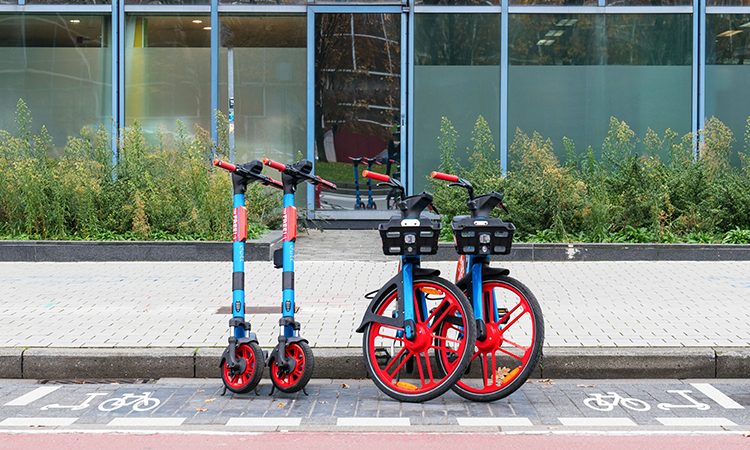

Credit: Dott
How is Dott utilising artificial intelligence technology to improve the parking of its shared e-scooters and e-bikes?
The goal of these measures is to enforce local parking rules, keep pavements and roads clear, while improving the integration of our micro-mobility vehicles into cities”
Dott is always trying to be a responsible operator, so we’re using this new technology to improve some of our parking compliance initiatives across a number of cities that we operate in. Essentially, this technology will be able to instantly review an end-of-ride photo submitted by our riders at the end of their trip. We evaluate that photo against a set of unique criteria for each city and the guidelines that have been provided by the city authorities. The goal of these measures is to enforce local parking rules, keep pavements and roads clear, while improving the integration of our micro-mobility vehicles into cities and the communities of our riders. We believe that riders will benefit from a more seamless end-of-trip experience, as well as instant feedback specific to their parking location.
What drove Dott to find a solution to micro-mobility parking problems?
The good news is that the majority of our users want to use our vehicles in a responsible way. In addition, in cities with offerings like allocated parking, around 97% of parking is already compliant. We do recognise, though, that there is a small number of poorly parked vehicles that can have a significant impact on the residents of the city. Therefore, we’ve decided to invest in this technology to help to tackle that issue and also assist in educating riders as they attempt to park their vehicles and guide them to do so in the best and most suitable way.
Why did Dott decide that AI was the solution to this challenge?
The development of the AI technology… means that there’s now a solution that will allow us to tackle the parking problem in real-time”
We’re always thinking about new technologies that can improve the overall rider experience. Further to this, we also aim to enhance the integration of our shared e-scooters and bikes into the broader city. Previously, I led a team that was responsible for checking the parking photos that we received from users at the end of their ride. This was a very manual process. Due to the time that this required, it meant that, for the most part, we could only provide feedback after the user had already left their vehicle. So, when a vehicle was incorrectly parked, this largely meant that our grounds team or the team members that we have on the street had to resolve this issue and repair the orderliness of those vehicles.
So, the development of the AI technology provided by our partner, Captur, means that there’s now a solution that will allow us to tackle the parking problem in real-time and ensure that, if a rider does attempt to parking incorrectly, we give them that specific advice and guidance to prevent them from leaving a vehicle in a disorderly way. This results in a more seamless experience for users and neater streets for riders, as well as more responsible parking.
Ultimately, we really wanted to be able to deliver on the real-time responsiveness for real-time correction, with the hope of increasing parking compliance. This should create a much better experience for our riders and teams and, of course, in our cities.
What criteria are used by the AI technology to assess the parking pictures that are submitted by Dott’s riders?
Each city has its own specific set of criteria”
The parking criteria that are agreed upon is done so in collaboration with the cities and the regulators that we operate with. So, we’re using AI to assess if the vehicle is blocking, for example, an entrance to a building or if it is left in the middle of the pavement. It’ll even identify things like if the vehicle is on the road, tipped over or outside of a parking bay.
Each city has its own specific set of criteria. In some cities, this could include over 20 evaluations of what the placement of a vehicle should be, allowing us to provide guidance back to the user.
A tonne of work has been done by our partner, Captur, with our internal teams. And, of course, this includes collaboration with all internal stakeholders, all with the North Star in mind of improving the overall experience.
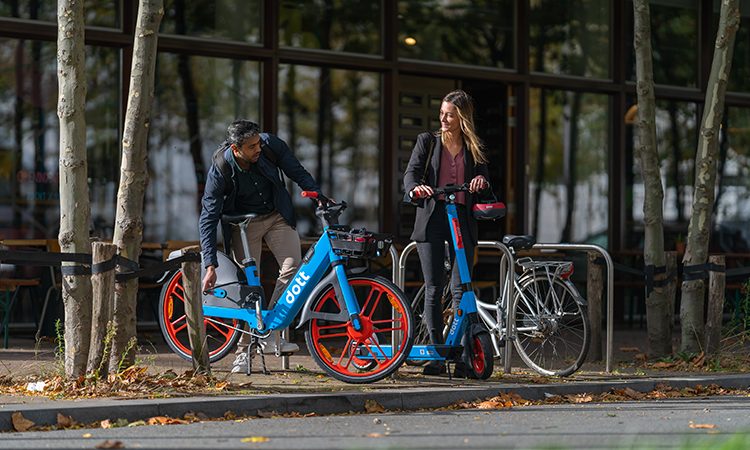

Credit: Dott
How does the new AI-supported measure address the issue of incorrect parking and contribute more to enforcing local parking rules for Dott’s shared micro-mobility vehicles?
We’re always thinking about how we can benefit the rider and create a more seamless experience, providing active education with instant feedback”
The AI technology instantly reviews the parking pictures submitted by the riders at the end of their trip. And again, based on the criteria and requirements specific to each city, we then give them a response back. When incorrect parking is detected, riders are notified pretty much within seconds with immediate guidance. In the example I gave before, if a rider is in the middle of a pathway, we’ll advise them to move away from the pathway. We can also give guidance on if they are in the right parking location.
This new measure really aims to enforce the local parking rules, however specific, and keep the pavement and the roads clear, improving the integration of our vehicles into cities even further. We’re always thinking about how we can benefit the rider and create a more seamless experience, providing active education with instant feedback and using technology to support the manual checks that were previously conducted wherever necessary.
In what ways does the implementation of AI technology for parking compliance benefit both Dott’s riders and the integration of e-scooters and e-bikes in urban environments?
So, for riders, the benefit is the real-time response and real-time education that we’re able to provide them with, which should hopefully make it a one-time event where we need to intervene. On the other hand, the benefit for cities is always going to be the real-time compliance and, hopefully, better data that we can share around the user behaviour in a city.
Which cities are currently part of this initial testing phase for the new AI-driven parking feature and how does Dott plan to gather data from the trial for the eventual implementation of the technology in other cities?
Initially, the new feature is being tested in Grenoble, Madrid and London, but we do have images so far that are being also sent from Milan, Rome, Padua and Poznan, which are all still gathering data for the trial. We are really hoping to use that data to explore the further roll-out across our existing operations. But every city that we operate in has a unique set of regulations, so we want to make sure that we also measure the accuracy in a controlled way.
What do you think the future of AI in micro-mobility looks like?
We really believe that the benefit of AI in micro-mobility also comes from real-time responses and immediate improvements”
As my role is really customer-focused, I’m inclined to focus more on improving the customer experience. However, we really believe that the benefit of AI in micro-mobility also comes from real-time responses and immediate improvements. When thinking about the benefit for cities, it will definitely centre around quicker updates and, again, more data when we do need to adjust for the local city regulations. So, if they do change, it’s a much faster implementation for us to apply those to the AI model than in the past. So, those are some of the benefits that we think will be available to us in micro-mobility in the future.


Related topics
Artificial Intelligence, Micro-mobility, Passenger Experience, Transport Governance & Policy
Related modes
Bikes & Scooters
Related countries
France, Italy, Poland, Spain, United Kingdom
Related organisations
Dott
Related people
Randy Berridge




